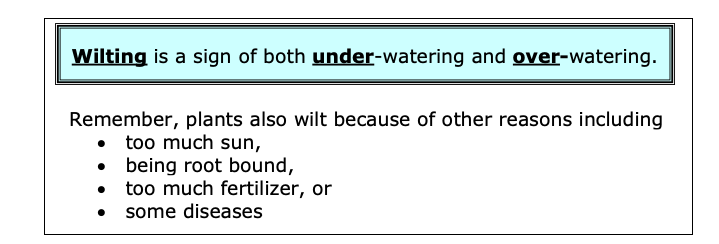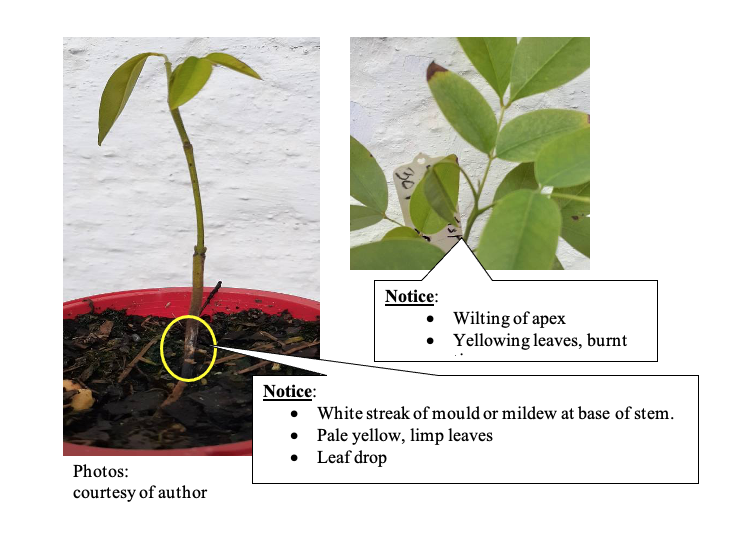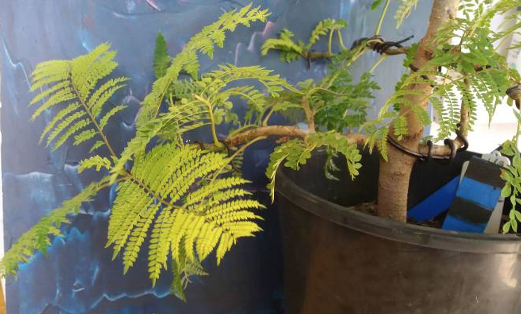Between 55% and 85% of a tree’s weight is water. Improper watering is the leading killer of plants.
Not enough water is one of the most common reasons that plants wilt and die, whilst over-watering, in simple terms, drowns your plant.
Some of the most important reasons plants need water include:
- Maintaining rigidity and the ability to stay upright (viz. a stick of celery)
- Engaging in photosynthesis to create energy and food
- Moving nutrients from the soil up the stem
Several factors determine how much you need to water plants, including the plant type, climate, soil conditions, weather, and location. Indoor plants are more prone to over-watering damage, while outdoor plants, especially those grown in pots, tend to suffer from under-watering.
Insufficient water results in a shallow root system which makes it difficult for your plant to stay healthy, and creates greater risk of diseases and pests.
It’s not always easy, even for expert gardeners, to get watering right.

Healthy soil allows for oxygen to exist in the space between particles of soil.
Too much water, or constantly wet soil eliminate these air pockets, resulting in a limited oxygen supply and plants are not able to breathe.
Check drip trays beneath pots for standing water, and empty promptly after each irrigation, to minimize the chances of over-watering (and mossies).
Most plants don’t require watering if the top 1 to 2 inches of soil feels moist.
Many times, under-watering and/or over-watering plants have similar symptoms, and reach the same outcome – sick or dead plants.
Under-watering
Under-watered plants typically grow slowly and have brown, dry leaf edges. The plants may drop leaves or flowers, or the plant may fail to flower entirely. The lower leaves usually suffer first, becoming yellowed and curled. Eventually the plant dries up and dies.
The Soil is Dry
A simple way of testing soil moisture is to press a screwdriver into the ground. When the soil is moist, the screwdriver should penetrate the soil easily. The depth of penetration will vary by the soil type, size of screwdriver, and your strength. As the soil dries up, the screwdriver will be harder and harder to push into the soil.
Slowed Growth
A slowdown in growth during spring/summer is a sign a plant is not receiving enough water. This can be a temporary or permanent situation.
If the plant experiences a temporary decrease in water supply, the growth may just slow for a short period. If the challenge is more permanent you may see new leaf growth being smaller than normal.
| Under watering | leaves are crisp. Dry, dead leaf tips –lower leaves usually suffer first, becoming yellowed and curled. Soil pulling away from the outsides of the pot | [Plants have pores on the surface of leaves called stoma. They allow air to enter plants. When plants do not have enough water they close their stoma to stop evaporation and this leads to wilting.] When a plant doesn’t get enough water, the tips and edges of leaves dry out and turn brown. Ultimately, entire leaves will brown and die. |
| Over watering | leaves are limp.soft, rotten roots. base of the stem may feel mushy. soil smells.Stunted/slow growth and leaf drop (both new and old leaves). Pests | root system drowns, and begins to die. Mildew, mould and other fungal growth on both the soil and plant are common symptoms of over-watering. [Yellowing leaves (old and new) which fall at the same accelerated rate. This is caused by water pressure build up in the leaves as the roots absorb more water than they can use. Cells eventually die and burst, forming blisters and areas that look like lesions.] Many insects thrive in damp places. |
Understanding the signs of over-watering and under-watering are the basics for more sophisticated water management.

To determine if you are under watering or over-watering you will probably need to try a combination of activities. For example, when you notice yellow leaves; check the soil with a screw driver to see if it is moist or dry.
Check soil moisture at least once weekly. Water when the top 1 to 2 inches of soil begins to feel dry, but before it dries out completely. Outdoor plants usually require more frequent watering than those kept indoors. Check the soil moisture of outdoor potted plants daily and garden plants at least twice as a week.
Most plants don’t require watering if the top 1 to 2 inches of soil feels moist.
And just to complicate the issue:
Chlorosis* in leaves of a jacaranda, can be caused by
- Over / under watering
- Too much / too little sunlight
- Iron deficiency in lime-rich soils
- Nitrogen deficiency – possibly incorrect soil pH
- disease
* loss of the normal green colour of leaves of plants

References:
https://jainsusa.com/blog/5-signals-you-are-underwatering-plants/
https://www.gardeningknowhow.com/plant-problems/environmental/under-watering.htm
https://homeguides.sfgate.com/difference-between-overwatering-underwatering-85478.html
https://www.brightview.com/resources/article/four-signs-you-are-overwatering-your-plants
https://blog.leonandgeorge.com/posts/2018/5/25/overwatering-vs-underwatering


